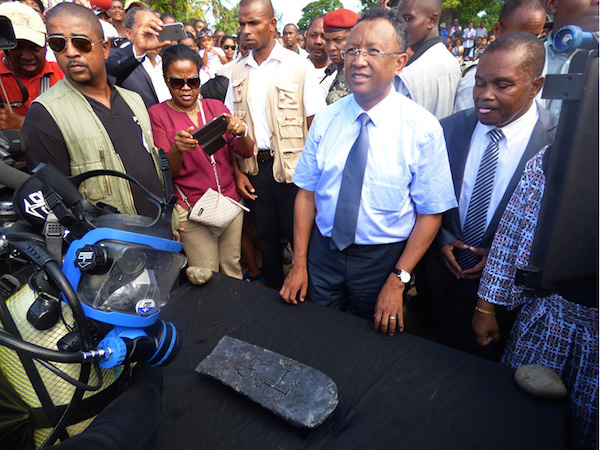Art World
Silver Treasure of 17th Century Pirate Captain Kidd Found near Madagascar

Photo: AFP via Art Daily

Lorena Muñoz-Alonso

Marine archaeologist Barry Clifford claims to have discovered a silver treasure belonging to the 17th-century pirate Captain Kidd, in a shipwreck off the coast of Madagascar, AFP reports.
Clifford—who discovered the world’s first fully authenticated pirate shipwreck, the Whydah, in 1984—found a 50-kilogram silver bar in the wreck near the island of Sainte-Marie.
But, UNESCO has criticized Clifford’s methods saying he may have damaged a precious archeological site. “You should have a competent underwater archeologist there,” Ulrike Guerin, a UNESCO underwater specialist, told AFP, referring to Clifford’s unsupervised exploration.
Clifford handed the silver ingot over to Madagascan President Hery Rajaonarimampianina. Soldiers guarded the purported treasure at the ceremony, which was attended by the US and British ambassadors.
This is not the first time that Clifford and UNESCO disagree. Last year, Clifford claimed he had identified the wreck of Columbus’s flagship that sank in 1492 off the northern coast of Haiti. The claim was promptly contested by UNESCO, which determined it was a ship from a later period.
The infamous Captain Kidd was born in Scotland circa 1645. He first worked for British authorities hunting pirates, before becoming one himself.
In 1698, Kidd was caught looting a ship. He was imprisoned and questioned by the British parliament, and executed in Wapping, near the River Thames, in 1701.
The whereabouts of his booty have remained a mystery ever since, prompting numerous treasure-hunting expeditions.
Last February, another treasure-hunting activity was reported when around 2,000 gold coins dating back more than 1,000 years were found in Israel’s ancient harbor of Caesarea (see Thousands of Ancient Gold Coins Found By Chance in the Mediterranean).